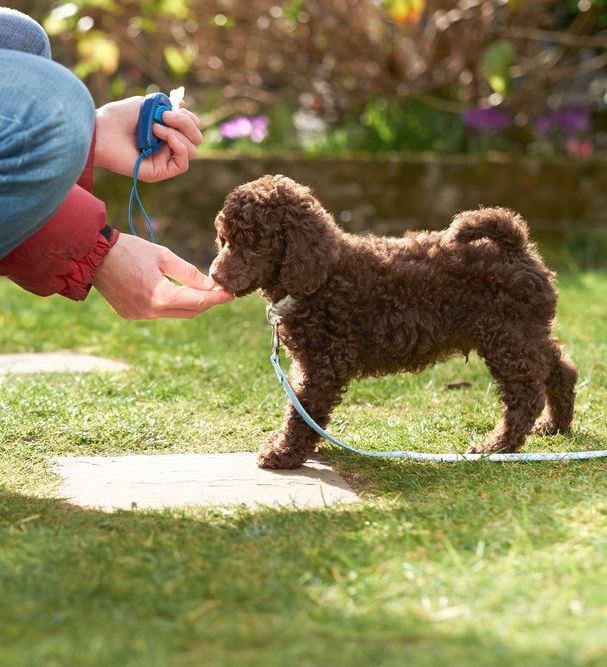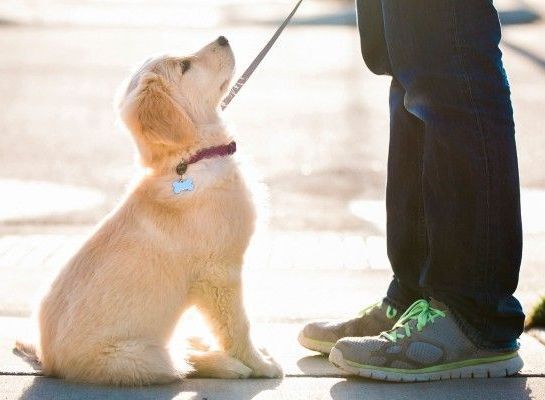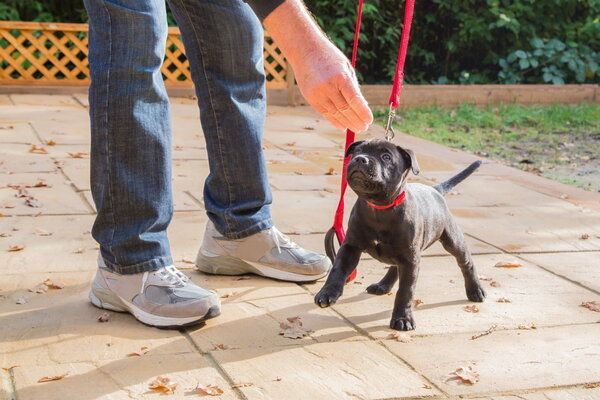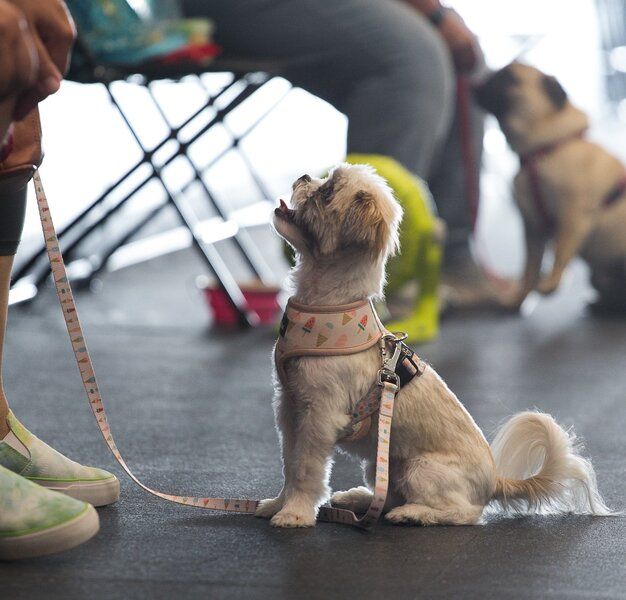Welcome Home! A Guide to Corpus Christi Dog Training Your New Puppy
Building A Strong Bond With Dog Obedience Training
It is a special and exciting moment for every household to bring home a sweet new puppy. The first few moments are spent introducing the puppy to its new family members, followed by allowing the puppy to explore its new home. Whether your puppy is assigned an indoor or outdoor living space, you can be sure to expect a lot of sniffing around, some hesitancy towards its new surroundings, and even a surprise puddle or two as the puppy claims its new territory. A few days pass and the nights seem longer, filled with multiple awakenings by a crying puppy needing attention or a guide to its designated bathroom area. Soon, left out shoes and socks become chew toys, the edge of the sofa has become shredded, and the plants in the yard are scattered across the lawn. The special and exciting feelings that were first felt upon bringing home a new puppy have been replaced by frustration and defeat as it becomes apparent the puppy does not come fully trained, but is instead, a tiny gift of chaos.
The good news is your puppy is actually an eager student waiting to be taught the standards for which it is expected to live by. It’s important to note that all of your interactions with your puppy are potential lessons; everything from the way you greet them (are you allowing them to jump up at you?) to how you walk them on a leash (are they really the ones leading?) will teach your puppy what is and isn’t acceptable behavior. Puppies are willing and ready to begin learning positive manners and habits as soon as you bring them home. The best time to start puppy obedience is now! Puppies as young as 8 weeks old have the capacity to learn the basics of obedience, but remember: the younger the puppy, the shorter the attention span. Puppy training lessons should be short, fun and supplemented with many opportunities for play!
Puppies learn best when they are well-rested and not
too excited. They are also more keen to pay attention in a familiar, distraction-free environment. Eventually, you and your puppy will transition to working outside and in new spaces, but the initial training stages should be within a low-key setting so that it is easy for your pup to focus on you or its trainer. Group or personal puppy obedience training is the best option for setting your puppy up for success. A puppy obedience trainer will be able to teach your puppy what the household and behavior expectations are, as well as show them that you are its leader by teaching you how to give commands. Group training will allow your puppy to develop social skills in a controlled environment, making your pup a happy and confident dog!
Speak With A Dog
Training Expert
Speak With A Dog Training Expert
Thank you for contacting us!
We will contact you shortly!
Please try again later.

Building A Strong Bond With Dog Obedience Training
It is a special and exciting moment for every household to bring home a sweet new puppy. The first few moments are spent introducing the puppy to its new family members, followed by allowing the puppy to explore its new home. Whether your puppy is assigned an indoor or outdoor living space, you can be sure to expect a lot of sniffing around, some hesitancy towards its new surroundings, and even a surprise puddle or two as the puppy claims its new territory. A few days pass and the nights seem longer, filled with multiple awakenings by a crying puppy needing attention or a guide to its designated bathroom area. Soon, left out shoes and socks become chew toys, the edge of the sofa has become shredded, and the plants in the yard are scattered across the lawn. The special and exciting feelings that were first felt upon bringing home a new puppy have been replaced by frustration and defeat as it becomes apparent the puppy does not come fully trained, but is instead, a tiny gift of chaos.
Speak With A Dog
Training Expert
Speak With A Dog Training Expert
Thank you for contacting us!
We will contact you shortly!
Please try again later.
The good news is your puppy is actually an eager student waiting to be taught the standards for which it is expected to live by. It’s important to note that all of your interactions with your puppy are potential lessons; everything from the way you greet them (are you allowing them to jump up at you?) to how you walk them on a leash (are they really the ones leading?) will teach your puppy what is and isn’t acceptable behavior. Puppies are willing and ready to begin learning positive manners and habits as soon as you bring them home. The best time to start puppy obedience is now! Puppies as young as 8 weeks old have the capacity to learn the basics of obedience, but remember: the younger the puppy, the shorter the attention span. Puppy training lessons should be short, fun and supplemented with many opportunities for play!
Puppies learn best when they are well-rested and not
too excited. They are also more keen to pay attention in a familiar, distraction-free environment. Eventually, you and your puppy will transition to working outside and in new spaces, but the initial training stages should be within a low-key setting so that it is easy for your pup to focus on you or its trainer. Group or personal puppy obedience training is the best option for setting your puppy up for success. A puppy obedience trainer will be able to teach your puppy what the household and behavior expectations are, as well as show them that you are its leader by teaching you how to give commands. Group training will allow your puppy to develop social skills in a controlled environment, making your pup a happy and confident dog!



Must-Have Essentials for Effortless Dog Training
Before welcoming your new dog home, gathering a few essential supplies will make the transition much smoother for you and your new dog.
Dog Treats: Keeping high-quality dehydrated or raw dog treats in your home can act as a powerful tool for positive reinforcement when rewarding your dog for good behavior. Giving your dog a tasty treat will further motivate and encourage your dog to follow new commands and help make obedience training successful.
Toys: Investing in a few toys for your dog will help to prevent destructive behaviors. Puzzle toys that stimulate your dog mentally will keep them occupied as well as grow cognitively. Providing your dog with a toy that can be stuffed with a treat will keep them actively busy and entertained when left alone. Toys are also used as a reward when playing with your dog. Positively reinforcing their playful behavior will create a positive picture of your relationship with your dog as well as teach your dog how to play with you.
Dog Bed: Giving your dog a designated sleep area will prevent your new dog from getting onto furniture or sleeping in areas that are off limits. If your dog is not keen on a dog bed, creating a
Must-Have Essentials for Effortless Dog Training
Before welcoming your new dog home, gathering a few essential supplies will make the transition much smoother for you and your new dog.
Dog Treats: Keeping high-quality dehydrated or raw dog treats in your home can act as a powerful tool for positive reinforcement when rewarding your dog for good behavior. Giving your dog a tasty treat will further motivate and encourage your dog to follow new commands and help make obedience training successful.
Toys: Investing in a few toys for your dog will help to prevent destructive behaviors. Puzzle toys that stimulate your dog mentally will keep them occupied as well as grow cognitively. Providing your dog with a toy that can be stuffed with a treat will keep them actively busy and entertained when left alone. Toys are also used as a reward when playing with your dog. Positively reinforcing their playful behavior will create a positive picture of your relationship with your dog as well as teach your dog how to play with you.
Dog Bed: Giving your dog a designated sleep area will prevent your new dog from getting onto furniture or sleeping in areas that are off limits. If your dog is not keen on a dog bed, creating a designated sleep space such as a crate or a separate room with a gate will teach your dog where it needs to be while the household is sleeping.
Leash and Harness: Purchasing a leash and harness is a must for outdoor walks with your new dog. Be sure to avoid choke collars, prong collars, e-collars, and retractable leashes, as these have been proven to be dangerous for a dog’s physical and mental health. Enrolling your new dog in leash training will teach your dog how to be led on a leash and will make outdoor and public activities more enjoyable.
Following these tips will help you and your family welcome your new dog to its new home with warm anticipation and minimal anxiety. Remember, be patient with your new dog as it adjusts to its new surroundings and be sure to maintain life as usual in order to guide your dog into a new normal. Cherish each learning moment along the way and enjoy the strengthening bond between you and your new furry family member!
designated sleep space such as a crate or a separate room with a gate will teach your dog where it needs to be while the household is sleeping.
Leash and Harness: Purchasing a leash and harness is a must for outdoor walks with your new dog. Be sure to avoid choke collars, prong collars, e-collars, and retractable leashes, as these have been proven to be dangerous for a dog’s physical and mental health. Enrolling your new dog in leash training will teach your dog how to be led on a leash and will make outdoor and public activities more enjoyable.
Following these tips will help you and your family welcome your new dog to its new home with warm anticipation and minimal anxiety. Remember, be patient with your new dog as it adjusts to its new surroundings and be sure to maintain life as usual in order to guide your dog into a new normal. Cherish each learning moment along the way and enjoy the strengthening bond between you and your new furry family member!
